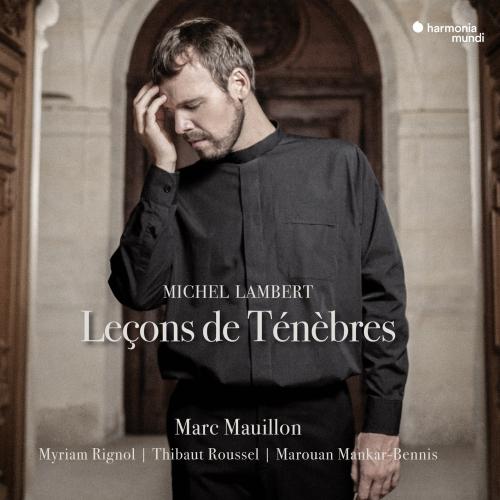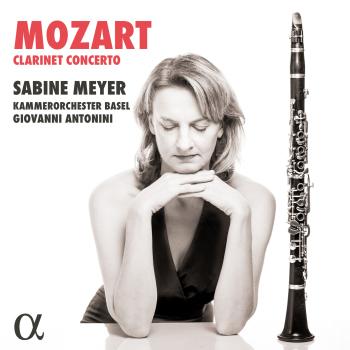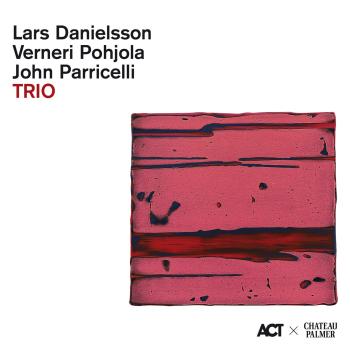
Lambert: Leçons de Ténèbres des Mercredi, Jeudi et Vendredi saints Marc Mauillon, Myriam Rignol, Thibaut Roussel & Marouan Mankar-Bennis
Album Info
Album Veröffentlichung:
2018
HRA-Veröffentlichung:
09.03.2018
Label: Harmonia Mundi
Genre: Classical
Subgenre: Vocal
Interpret: Marc Mauillon, Myriam Rignol, Thibaut Roussel & Marouan Mankar-Bennis
Komponist: Michael Lambert
Das Album enthält Albumcover Booklet (PDF)
- Michel Lambert (1610 - 1696): Première Leçon du premier jour:
- 1 Première Leçon du premier jour: Incipit Lamentatio Jeremiæ - Aleph. Quomodo sedet sola 02:35
- 2 Première Leçon du premier jour: Beth. Plorans ploravit in nocte 02:39
- 3 Première Leçon du premier jour: Gimel. Migravit Judas 02:18
- 4 Première Leçon du premier jour: Daleth. Viæ Sion lugent eo 02:07
- 5 Première Leçon du premier jour: He. Facti sunt hostes 02:52
- 6 Première Leçon du premier jour: Jerusalem, Jerusalem, convertere ad Dominum 02:00
- Seconde Leçon du premier jour:
- 7 Seconde Leçon du premier jour: Vau. Et egressus est 02:04
- 8 Seconde Leçon du premier jour: Zain. Recordata est Jerusalem 02:11
- 9 Seconde Leçon du premier jour: Heth. Peccatum peccavit Jerusalem 01:31
- 10 Seconde Leçon du premier jour: Teth. Sordes ejus in pedibus 01:29
- 11 Seconde Leçon du premier jour: Jerusalem, Jerusalem, convertere ad Dominum 01:05
- Troisième Leçon du premier jour:
- 12 Troisième Leçon du premier jour: Jod. Manum suam misit hostis 01:38
- 13 Troisième Leçon du premier jour: Caph. Omnis populus ejus 02:19
- 14 Troisième Leçon du premier jour: Lamed. O vos omnes 01:29
- 15 Troisième Leçon du premier jour: Mem. De excelso misit ignem 01:39
- 16 Troisième Leçon du premier jour: Nun. Vigilavit jugum iniquitatum mearum 01:38
- 17 Troisième Leçon du premier jour: Jerusalem, Jerusalem, convertere ad Dominum 01:46
- Prélude non mesuré pour viole seule:
- 18 Prélude non mesuré pour viole seule 01:56
- Première Leçon du second jour:
- 19 Première Leçon du second jour: De Lamentatione Jeremiæ - Heth. Cogitavit Dominus 02:41
- 20 Première Leçon du second jour: Teth. Defixæ sunt in terra 01:26
- 21 Première Leçon du second jour: Jod. Sederunt in terra 01:34
- 22 Première Leçon du second jour: Caph. Defecerunt præ lacrimis 01:39
- 23 Première Leçon du second jour: Jerusalem, Jerusalem, convertere 01:44
- Seconde Leçon du second jour:
- 24 Seconde Leçon du second jour: Lamed. Matribus suis dixerunt 02:16
- 25 Seconde Leçon du second jour: Mem. Cui comparabo te 02:08
- 26 Seconde Leçon du second jour: Nun. Prophetæ tui viderunt 01:48
- 27 Seconde Leçon du second jour: Samec. Plauserunt super te manibus 01:52
- 28 Seconde Leçon du second jour: Jerusalem, Jerusalem, convertere 01:22
- Troisième Leçon du second jour:
- 29 Troisième Leçon du second jour: Aleph. Ego vir videns 02:36
- 30 Troisième Leçon du second jour: Beth. Vetustam fecit 03:09
- 31 Troisième Leçon du second jour: Gimel. Circumedificavit adversum 02:45
- 32 Troisième Leçon du second jour: Jerusalem, Jerusalem, convertere 01:03
- Nicolas Hotman (1613 - 1663): Allemande:
- 33 Allemande 02:36
- Première Leçon du troisième jour
- 34 Première Leçon du troisième jour: De Lamentatione Jeremiæ - Heth. Misericordiæ Domini 04:20
- 35 Première Leçon du troisième jour: Teth. Bonus est Dominus sperantibus 03:13
- 36 Première Leçon du troisième jour: Jod. Sedebit solitarius 02:36
- 37 Première Leçon du troisième jour: Jerusalem, Jerusalem, convertere ad Dominum 00:51
- Seconde Leçon du troisième jour:
- 38 Seconde Leçon du troisième jour: Aleph. Quomodo obscuratum est aurum 02:04
- 39 Seconde Leçon du troisième jour: Beth. Filii Sion inclyti 01:46
- 40 Seconde Leçon du troisième jour: Gimel. Sed et lamiæ nudaverunt mammam 02:00
- 41 Seconde Leçon du troisième jour: Daleth. Adhesit lingua lactentis 01:53
- 42 Seconde Leçon du troisième jour: He. Qui vescebantur voluptuose 01:39
- 43 Seconde Leçon du troisième jour: Vau. Et major effecta est 01:31
- 44 Seconde Leçon du troisième jour: Jerusalem, Jerusalem, convertere ad Dominum 01:00
- Courante:
- 45 Courante 02:38
- Troisième Leçon du troisième jour:
- 46 Troisième Leçon du troisième jour: Incipit Oratio Jeremiæ 01:53
- 47 Troisième Leçon du troisième jour: Pupilli facti sumus 02:06
- 48 Troisième Leçon du troisième jour: Servi dominati sunt 01:54
- 49 Troisième Leçon du troisième jour: Mulieres in Sion 00:52
- 50 Troisième Leçon du troisième jour: Jerusalem, Jerusalem, convertere ad Dominum 01:08
- Ennemond Gaultier (1575 - 1651): Tombeau de Mezangeau:
- 51 Tombeau de Mézangeau 04:44
Info zu Lambert: Leçons de Ténèbres des Mercredi, Jeudi et Vendredi saints
None of us knew what to expect when we took the plunge into the first cycle of the Leçons de Ténèbres by Lambert. The secular work of this great master of the French XVII Century – one of the great singers and pedagogues of his time was known to us, each one of us having performed many times his wonderful court airs. We thereupon thought that we were on known territory and able to adapt ourselves to suit his religious music, even though it seemed odd to us that these Leçons were not better known or often performed and even less recorded – this first cycle being the very first recording. But from the first working session, we understood why. It took a good three hours just to read the first Leçon for about ten minutes worth of music! Indeed, the vocal line, abundantly ornamented with Gregorian 'plainchant ', is not rhythmically rigorously organised in relation to the basso continuo line. We therefore had to put in place both parts, melodic and harmonic, with a very careful and well thought out approach. Nonetheless, once we got over these initial hurdles, the music revealed itself to us in all its beauty and its singular depth, the sobriety and the expressivity of the plain-chant comes through almost as a kind of watermark behind the genius and endlessly renewed inventiveness of the ornamentation. We took on the huge task of adapting this score, which had always remained a puzzle for musicologists who in actual fact were very interested in hearing our interpretation in the light of the latest research. Several stages were necessary in order to find the best solution for performing this work whilst remaining as faithful as possible to the original source. Faced with ornamentation both prolific and virtuosic, equally precise as it is mysterious, conserving moments of unexpected liberty in the middle of a very restrained form, one of the major challenges was to find a specific vocality and an adapted continuo, taking us back to the very heart of our artistic research. It is rare, that as a musician we are to such a point interrogated by a score and each one of us by bringing his stone to the edifice, truly lived this adventure as a gift. According to witnesses at the time, we know that these Leçons by Michel Lambert were performed by three singers during the Tenebrae services but we chose the option in this recording of providing a version for male voice, to take into account the fact that our composer himself must have sung these pieces – the score, even if we know that it is not autographed, leads us to believe that it is more of an 'aide-mémoire' rather than a ready to be performed version – and that he sang his own court airs, even though they were written for soprano. He also played the accompaniment, probably on the theorbo – in the company of the gambist and theorbist Nicolas Hotman, of whom we have chosen a few instrumental pieces made use of as preludes, postludes, meditations and phrases in between these Leçons, which at the time were placed in the middle of liturgical services, three days before Easter… If the experience suggested here differs from that which was originally anticipated for these pieces, it's nevertheless worth being listened to notably for the meditative state into which it plunges us. Now we can share with you our gift!
Marc Mauillon, baritone
Myriam Rignol, viola da gamba
Thibaut Roussel, theorbe
Marouan Mankar-Bennis, harpsichord
Marc Mauillon
The exploration of the relationship between words and music is at the heart of Marc Mauillon’s artistic approach. Exceptional vocal means have given him the possibility oftaking on both baritone and tenorrepertories, an immediately recognisable timbre, he puts his sense of colour and of diction at the service of his insatiable curiosity. From Guillaume de Machaut to contemporary repertoire, from opera to recital, his career history is a reflection of an out of the ordinary eclecticism.
His encounter with William Christie as part of the Jardin des Voix (2002), then with Jordi Savall, at first opened up for him a magnificent field of exploration of early music, which he later expanded. Passionate about chamber music, he performs in particular with Pierre Hamon, Angélique Mauillon, Guillaume Coppola, Anne Le Bozec, Vivabiancaluna Biffi, Myriam Rignol, Marouan Mankar and Thibaut Roussel, adapting the art of singing to suit the music, the repertoires and the characters that his voice portrays. In addition to numerous opera broadcasts, Marc Mauillon has made three recordings of secular music by Machaut, to which must be added a collection of melodies by Francis Poulenc on poems by Paul Éluard, two recordings on First World War musicians, a recording of Florentine monodies by Jacopo Peri and Giulio Caccini and a solo a cappella recital. Regularly praised by the critics, this discography is an assertion of his choices.
Myriam Rignol
Regularly invited to performin numerous countries, Myriam Rignol has received several international prizes (including the First Prize of the Yamanashi Competition in Japan). She is a member of the Ensemble Les Timbres (First Prize at the Bruges Competition) and is also a member of Les Arts Florissants (William Christie and Paul Agnew), Pygmalion Ensemble (Raphaël Pichon) and the Ricecar Consort (Philippe Pierlot) with whom she has made numerous recordings. In 2011, she started a class for the viola de gamba at the Regional Conservatoire of Grand Besançon.
Marouan Mankar-Bennis
began studying the harpsichord in Limoges before perfecting himself with Elisabeth Joyé and entering the Paris Conservatoire. He completed his training with Bob van Asperen, Nicolau de Fuiredo and Pierre Hantaï. His double activity both as a concert artist and a choir master have led to him working under a number of conductors, in particular Vincent Dumestre (Le Poème Harmonique) with whom he recently performed in London, New York, Vienna, Tokyo and Moscow. As a trained conductor, he founded the ensemble La Lyre d’Orphée and is preparing a first solo recording based on the works for harpsichord by Jean-François Dandrieu (L’Encelade). He teaches at the Pantin Conservatoire and regularly leads courses and artistic projects in France and abroad. After studying the modern guitar and Sound, Thibaut Roussel started to specialise in the interpretation of early music by studying the theorbo, the baroque guitar as well as the lute at the Versailles Conservatoire in the class of Benjamin Perrot. He performs as a soloist and as a continuo player in early music ensembles such as the Ensemble Correspondances (Sébastien Daucé), Pygmalion (Raphaël Pichon), the Centre de Musique Baroque de Versailles (Olivier Schneebeli), Le Poème Harmonique (Vincent Dumestre), La Rêveuse (Benjamin Perrot and Florence Bolton). Very interested in contemporary music, he has participated in numerous creations written for original instruments.
Booklet für Lambert: Leçons de Ténèbres des Mercredi, Jeudi et Vendredi saints












